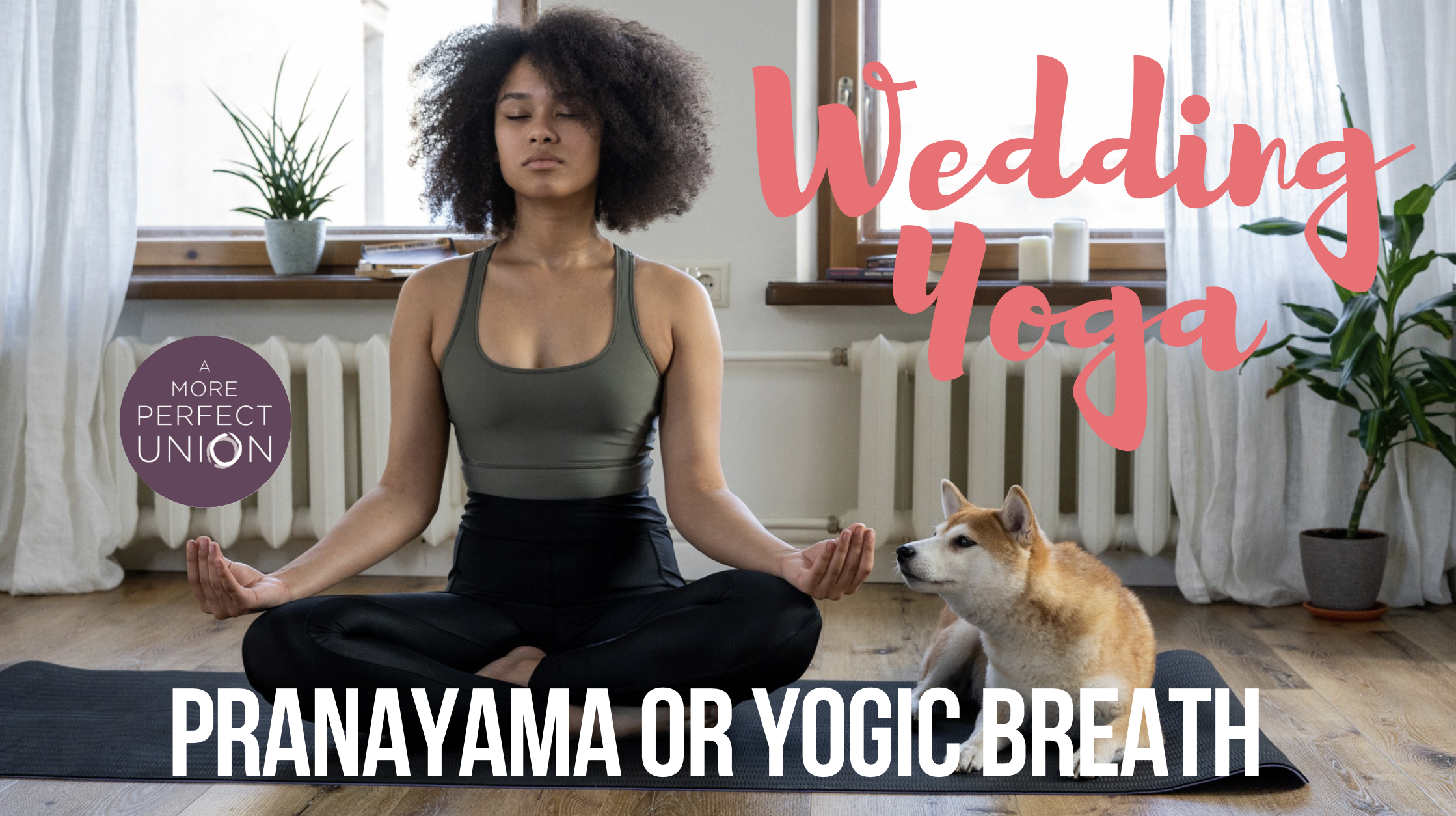Wedding Yoga: Pranayama or Yogic Breath (part 1)
Yogic Breathing is the foundation of our yoga practice. There is certainly a lot of emphasis on the physical poses or asanas. However, the practice of pranayama is just as important. I talk about deep breathing or meditating to find Zen and relaxation, especially as you plan your wedding. However, I rarely take a deep dive into pranayama.
Pranayama is the formal practice of controlling the breath. Prana is a Sanskrit word that means ‘life force’ and ayama means ‘extending or stretching’. Yogic breath is one of the Eight Limbs of Yoga referenced by The Yoga Sutras of Patanjali. Therefore, it was considered an integral step on the path to enlightenment. While enlightenment may not be the goal of yoga or meditation for you, understanding nasal breath and educating yourself on the guiding principles can only deepen your practice. And allow you to find ease and calm during your the engagement period.
What is Prana?
The ancient Indian system of yoga identifies prana as the universal life force or energy which distinguishes the living from the dead. This life force energy (or chi) flows through thousands of subtle energy channels they called ‘nadi’ and energy centers called ‘chakra.’ There are many sources to derive, increase, maintain and sustain your prana level, and these could be broadly classified into four major categories: food, rest, being in a calm, happy frame of mind, and of course, breath. All of these things are important to consider, especially if you’re trying to be a Zen groom or bride!
The guiding principle behind Pranayama is that we all hold physical or emotional blocks in our bodies which inhibit the flow of breath. This can leave us feeling “stuck” or blocked physically and emotionally. By practising Pranayama (and asana) we are clearing these blocks so breath and prana can flow freely. Our bodies then function properly and our minds become calmer and clearer.
In yoga classes we are encouraged to keep our mouths closed, breathing only through the nose. This is different from other exercise routines and is highly advised off the mat, as well. The evolution of our respiratory systems to partially separate the passage of food and air is sophisticated and well studied.
Four Benefits to Breathing through the Nose:
1. The nose serves to filter the air that we breathe. Lined with millions of tiny cilia and mucous membranes, the nose is designed to catch bacteria, dirt and debris that would otherwise travel into the lungs.
2. Air temperature and humidity is also regulated by the nose. If you breathe in excessively cold and dry air, you can actually shock your system. The internal shape of the nose is designed to make the air swirl—that moistens it and regulates the temperature.
3. Nasal breathing triggers greater use of your diaphragm and thus invites a deeper breath and more oxygen into the system. Breathing through the mouth is inherently shallow, almost sharp and thus has more of an aggressive effect on the nervous system.
4. The ‘nose breather’ is calmer and more centered. Even more amazing, and rarely considered, is that air drawn in the nose also passes through deep and wide chambers (sinuses) across the face and into the skull. Two of the sinuses straddle the pituitary gland - a major gland involved in the release hormones affecting stress management, reproduction, and growth. Mouth breathing completely bypasses the interaction and may leave you feeling heavier, less clear, more sluggish.
Breathing is one of the most natural things we do as humans. Taking time to focus on the breath allows us to pause from daily stresses, physical symptoms, and emotions. This is certainly welcome as we plan a wedding and prepare for marriage. It is in that moment where we focus on the breath that we can return to a neutral state of being, gain clarity, feel rejuvenated, and enhance an overall sense of well-being. These are just a few wonderful reasons to invite a pranayama practice into your daily routine.

